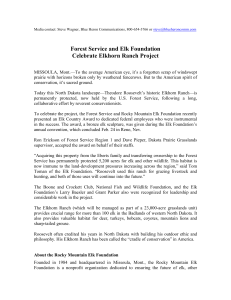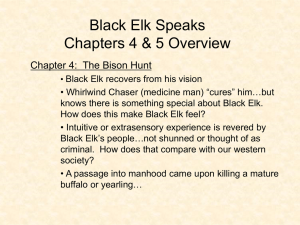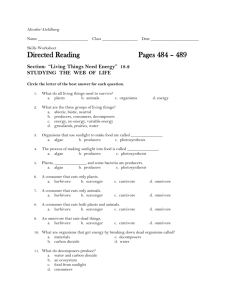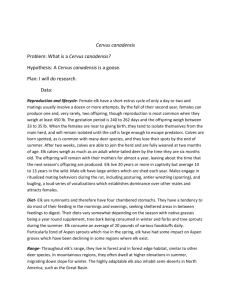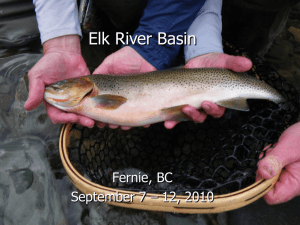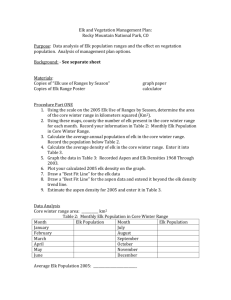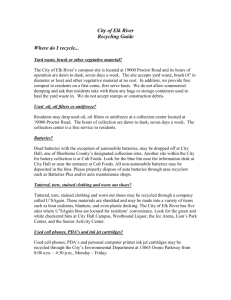Elk Anatomy
advertisement
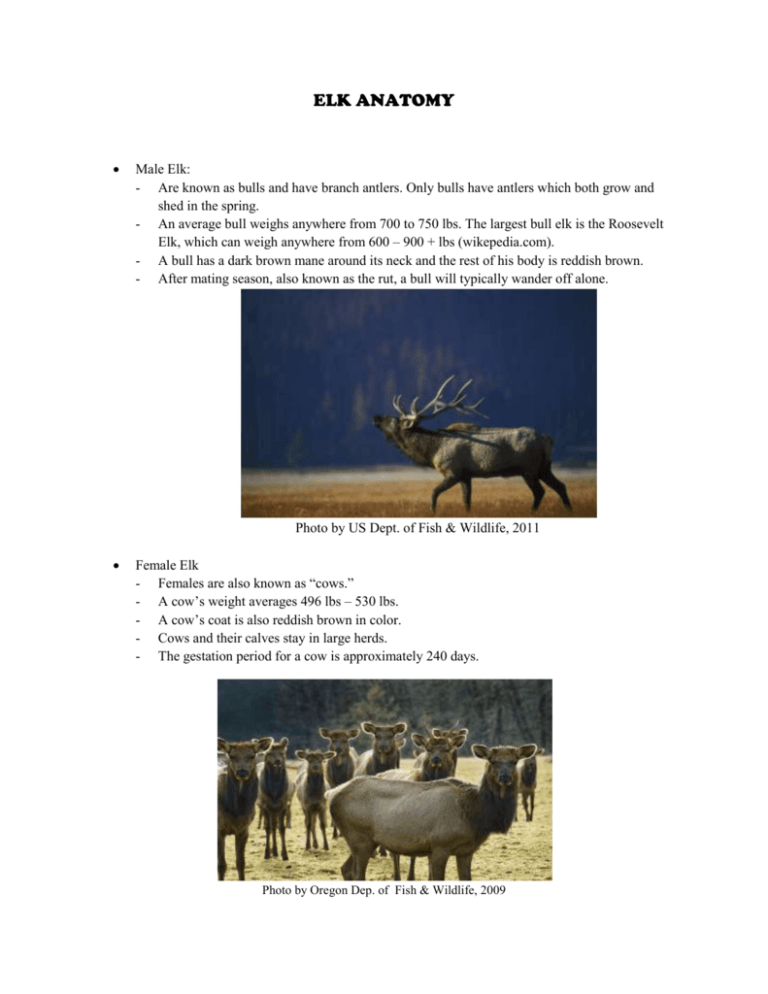
ELK ANATOMY Male Elk: - Are known as bulls and have branch antlers. Only bulls have antlers which both grow and shed in the spring. - An average bull weighs anywhere from 700 to 750 lbs. The largest bull elk is the Roosevelt Elk, which can weigh anywhere from 600 – 900 + lbs (wikepedia.com). - A bull has a dark brown mane around its neck and the rest of his body is reddish brown. - After mating season, also known as the rut, a bull will typically wander off alone. Photo by US Dept. of Fish & Wildlife, 2011 Female Elk - Females are also known as “cows.” - A cow’s weight averages 496 lbs – 530 lbs. - A cow’s coat is also reddish brown in color. - Cows and their calves stay in large herds. - The gestation period for a cow is approximately 240 days. Photo by Oregon Dep. of Fish & Wildlife, 2009 Calves - Calves are spotted when they are born. - They will stay with the cow for about a year. - Calves weigh an average of 30 lbs at birth. Photo by Forest Wander, 2011 More Anatomy Facts There are sub-species of elk including the Roosevelt Elk, Rocky Mountain Elk, and Tule Elk. Roosevelt Elk (named after President Theodore Roosevelt) are found in the Pacific Northwest near the coast. They live in the deep coast rainforest & have the darkest coats of elk, which help them blend in better with their surroundings. They have also been known to have some of the largest antlers of all the species. Tule Elk are found in California (* More info ) . The Rocky Mountain Elk is probably the most widely known elk. They survive not just in the Rocky Mountains of the US, but all mountainous areas, prairies and hardwoods. Most North American elk are Rocky Mountain Elk (Rocky Mountain Elk Foundation). - All elk have a thick hide and grow a thick coat in the winter. While their color is mostly reddish brown, this can change depending on the habitat & other environmental conditions in which they live. They shed their hair twice a year. The elk’s winter coat is warmer than the summer coat. The winter coat consists of two layers to help the elk survive what is often a long and cold winter. - Elk talk to each other by using squeals, barks, chirps, and bugling. Bugling is only done by the male to show off to a female at the time of the rut. He will also do this to warn other bulls to stay away. You can go anywhere online to listen to various samples of the sounds they make to communicate with each other. Go the following link and find “Elk Talk” to hear various sounds: http://www.rmef.org/ElkFacts.aspx - The lifespan of an elk can range anywhere from 10-13 years in the wild.
